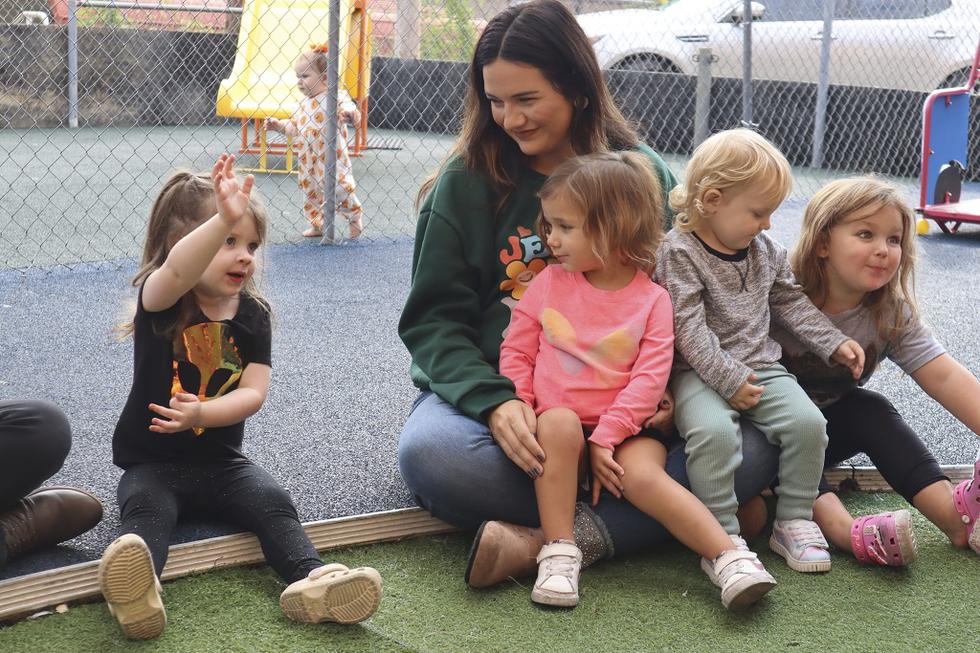Given the close presidential race, reflecting on future legislative priorities in 2025 may sound premature. But Kamala Harris has signaled strongly that, if elected, one of her top priorities would be the set of policies grouped together as the care economy. This includes child care, early-childhood education, paid family and medical leave, and in-home support services for people with disabilities or the elderly.
A combination of investments and public programs have been proposed to either improve affordability and access for people needing caregiving, ensure living-wage careers for caregivers, or both. “It does feel like the stars are aligning and that this is the care ticket,” said Ai-jen Poo, director of Caring Across Generations, one of the major advocates for this agenda. Not only has Harris demonstrated support for these items, including during the Build Back Better fight.

But in addition, Gov. Tim Walz in Minnesota, with the same kind of thin legislative majority as Harris would likely face if she wins a governing trifecta. He has sold those policies as , which has been effective.
“Harris and Walz have the receipts that go back decades. Constituents and voters can be assured that they are walking the talk,” said Kristin Rowe-Finkbeiner, executive director of MomsRising. Joe Biden also put an emphasis on care work in his 2020 run for the White House.
In the end, that agenda could not break past familiar hurdles to legislative success. What are care economy advocates doing differently this time to ensure passage? What lessons were learned from that experience? one senator short in 2022, when care economy items got taken out of what would become the Inflation Reduction Act by Sen. Joe Manchin (I-WV).
That’s an optimistic reading. Sen. Kyrsten Sinema (I-AZ), while nominally a supporter of care economy measures, largely ensured their exclusion from the IRA by significantly reducing the tax revenue available in the overall package.
To save money in the caregiving programs, lawmakers , created , and to the private sector. The programs ultimately on offer were easier to reject, because they were so weakened. The public may not have even rallied to save them when they expired a few years down the road.
I at the time. And while Manchin and Sinema aren’t coming back to Washington, the constraints in realizing the care economy agenda haven’t really gone away. Care advocates know that the expiration of the Trump tax cuts at the end of 2025 could provide significant revenues for their agenda items, which could avoid the Senate filibuster by being run through budget reconciliation.
This is an enticing approach. “They’re talking about taxing the billionaires so that everyday working families can have care,” said Poo. The question, of course, is how much those dollars will stretch.
In budget reconciliation, bills must be budget-neutral outside the ten-year window (money can be spent inside that window, as on the Trump tax cuts). There are also statutory PAYGO rules, though they can be waived. If the to allow legislation to pass by majority vote, reconciliation constraints would be lifted.
But doing that for all legislation hasn’t been expressed. The Harris campaign has adopted tax proposals from the most recent Biden budget that would in revenue from the wealthy and corporations over a decade. But a lot of this money is already booked.
Extending other parts of the Trump tax cuts that would hit people making under $400,000 a year would cost . In addition, the Harris campaign has prioritized enhancing the Child Tax Credit, with a $6,000 credit for newborns in the first year, $3,600 per year up to age six, and then $3,000 a year after that up to age 18. That could .
And you have the Harris-endorsed , or repealing the cap on deductions for state and local taxes, which Senate Majority Leader Chuck Schumer (D-NY) . This all would leave the cupboard relatively bare. Care advocates do believe that expanding the CTC is an important tool to stabilize low-income families.
But they are firm that it doesn’t serve as a substitute for their agenda. “I don’t think it’s interchangeable, we have to be really clear about that,” said Poo. “Building a care infrastructure is about a sustainable economy as a whole.
” The upshot is that the care economy agenda could find itself in a similar place to where it was in 2022: without Congress providing the resources for the full suite of policies. At that time, there was tension between wanting to get everything in the agenda started and focusing on one or two programs that would be adequate and permanent. So I’ve been wondering whether that tension had been resolved in any way.
“The one thing we took away is that we have to build more power,” said Carol Joyner, director of the Labor Project at Family Values @ Work, which advocates for paid leave. Added Monifa Bandele, chief strategy officer with MomsRising, “The tactical decisions will be based on how much power we’ve built.” She explained how they organized to increase their force of moms in West Virginia when Manchin rejected the care economy measures.
Obviously, pressuring lawmakers to adopt your agenda is important. But that doesn’t quite get at which course to take between permanent or semi-permanent measures. Poo said that investments in care infrastructure have to be developed in the same way as regular infrastructure.
And the bills from 2021 and 2022—universal pre-kindergarten, a child care system that reduces costs for families and raises wages for caregivers, a paid family and medical leave system accessible to workers, and investments in support services for elderly people and people with disabilities—would set the baseline. “I think there are some improvements to be made,” she said. “We have some time.
But I do think that’s the core of it.” Those proposals did have their critics. Because the child care subsidies were phased in, the early years of the program would see child care costs for anyone making above state median wages .
The paid leave program required work history that could of new mothers, and would use a private reimbursement framework that would be great for , at the expense of the actual value being put into the program. Elder care funding was in the final bill before it was cut out. And none of them were as clean as, for example, simply .
If there were a priority on making access universal, so that everyone would be entitled to paid leave on a similar scale as well as affordable child and elder care, then it would be more difficult to nibble away at the programs. When I asked advocates about this, they expressed strong support for universal access. Joyner talked about “building an equity lens for paid leave and for child care.
” But that’s not necessarily where the last set of bills started from. If Democrats must reach across the aisle to win these policies, because they lack the votes in Congress, there are a who have supported caregiving, though probably more than setting up any public programs to provide care. The fact that to find an available workforce if there is no caregiving available for working families could at least provide an opportunity for Republican lawmakers to listen to certain proposals.
But do little more than increase existing tax credits that haven’t succeeded in solving the problem for families or workers. One persistent problem in designing any public caregiving program is the extent to which it might push out incumbents. that in the child care space, national private equity–backed chains are by selling the service as a luxury good.
During Build Back Better, these chains publicly gave nominal support to a universal subsidy, but in private didn’t want higher-earning families to qualify for benefits, since they wanted to keep serving them; in , these companies expressed concern that demand for their services would drop if government increased support. The political strategy will of course be determined by the makeup of the government in a few months’ time. But to the extent that advocates are preparing, they are doubling down.
“Broadly the measures remain the same, the urgency remains the same for businesses and families,” said Rowe-Finkbeiner. Ai-jen Poo believes the way that the Build Back Better debate played out strengthened the case for the future. “Any time you’re doing something as significant from a policy perspective as what we’re proposing, it takes time to socialize with legislators,” she said.
“We have champions throughout the Democratic caucus. And we have a coherent narrative. And now it’s about full steam ahead.
”.



















